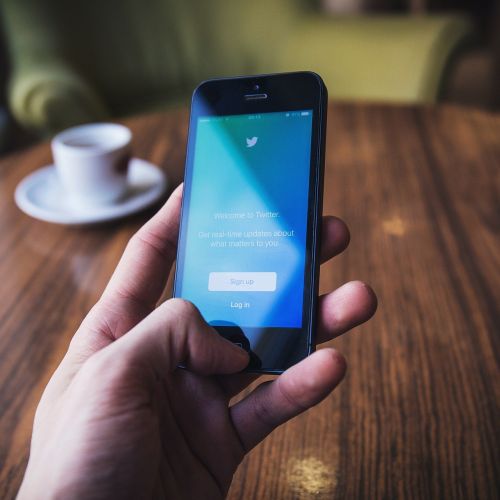#280characters and the Value of Twitter
Updated 31 May 2021 (Published 27 September 2017) by Miles in Digital Marketing
Twitter has decided to destroy the internet by announcing they're changing the character limit from 140 to 280. The team broke it down and asked: does Twitter have anything left to offer?

Episode 10
Earlier today, Twitter announced that they were expanding the character limit from 140 to 280 characters in select languages. They stated:
... in languages like Japanese, Korean, and Chinese you can convey about double the amount of information in one character as you can in many other languages, like English, Spanish, Portuguese, or French.
So this begged the question:
Will this latest change encourage more users to engage with the platform?
Let’s review: the history of the Twitter character limit
The Twitter character limit has been at the center of debates since the platform launched in 2006.
The 140 character limit has changed over time to exclude @ replies, shorten URLs and include images, videos, and polls.
Has it brought in more people to the platform?
The changes Twitter has made in the past hasn’t significantly impacted its growth, because they always seem to be one step behind its competition. Platforms were born out of its reluctance to change.
Remember TwitPic?
The social news platform
You may notice that Twitter has changed its classification on any app store, from a social app to a news app.
The lack of an algorithm makes Twitter the perfect news platform because it’s focused on what’s happening right at this very moment.
Over time, it’s made attempts to categorise its information to present itself as a news source, such as the Moments feature, but it still struggles to keep up with the user base of Facebook and Instagram.
Twitter has been struggling with its social media DNA since its birth and doesn’t solve the issue by labeling themselves as a news app.
If the news aspect of the site is driven by content created by its users, they must realise that they need to keep up in order to ensure their survival. This means implementing features as requested by their users or simply meeting the demands of the market.
The most significant issue with Twitter is that it is slow to react to trolls and personal attacks on its users. Basically, it’s slow to protect the people who are the soul of their community.
The decline of Twitter
So many people have written about this.
We’ll be brief.
It’s difficult to ignore the fact that Twitter started out as a promising companion to Facebook, essentially taking the status update component and removing everything else, making it simple to share your thoughts in the third person.
But 10 years is a long time to run with something. Facebook has gone through many iterations, all surrounding the status update. People have even stopped writing about themselves in the third person.
Mostly.
The key difference between the two platforms is this:
Community.
There is a community aspect on Facebook that drives its content and continuity from its audience. This does not exist in Twitter.
With Twitter, you’re able to publish your thoughts to the world and anyone can read it. We liken Twitter to a cocktail party, anyone passing by can jump in on the conversation. And just like cocktail party banter, topics change quickly.
Approximately 350k tweets are sent per minute around the world. This makes content quickly disposable and there are platforms such as Facebook and Instagram which provide users with a simple way to live through their history any time they want.
#280characters
So, going back to this earth-shattering news, we wonder: out of all the things that Twitter could have changed, why this?
We’ve had various requests for Twitter ourselves over the years, the biggest one being the ability to edit a tweet.
If you check out the hashtag, you’ll see all sorts of other requests, too.
If you’re not really used to Twitter, it can be difficult to express yourself in 140 characters, so we imagine that this is yet another feature to encourage engagement and hopefully, an increase in ad spend.
Why we like Twitter
Let’s not spend this entire post hating on Twitter.
After all, it basically changed fan mail forever. Now we can tweet to any of the Kardashian’s all day every day.
What’s not to love?
True story: Kim Kardashian once followed Richard for a few hours. A few hours!
A lot of our clients ask us about Twitter because they’ve heard about it but they’re not sure why they should be using it or what they should be saying on it.
Your competition is using it
If your competition is actively engaged on Twitter, you might consider using it in your strategy. It’s a key indicator that your target audience is using it, too. This leads us to...
Brand management
If your target audience are active Twitter users, chances are that they might already be talking about your brand or product. It’s a great opportunity to open that line of communication.
One of the biggest reasons people unfollow companies on any social media platform is because they feel they’re being ignored. It’s important to acknowledge and reply to any engagement that your brand encounters, and helping to control that narrative.
It’s good for networking
Twitter offers you a direct line to a key player in your industry or an influencer. It makes it much easier to connect than sending an email, which you may or may not even have access to.
It’s a great way to be able to ask for advice, find an employment opportunity or get in touch with someone who can help you promote your product.
News by the people
If you want a completely unfiltered look at what’s going on in the world, Twitter is the place to get your news.
As there is no algorithm, you’re able to see what’s going on in the world right now at this very moment.
It’s the ability to quickly and easily upload photos and video makes it a valuable platform for sharing news as it’s happening.
It will be interesting to see how people will be adapting to the change, and if it will make any impact on the way people use Twitter.


